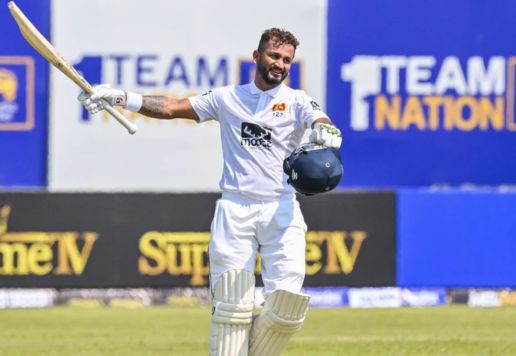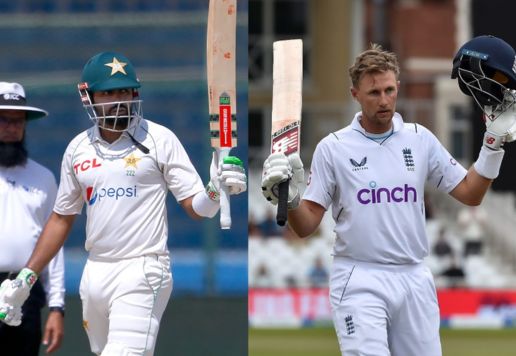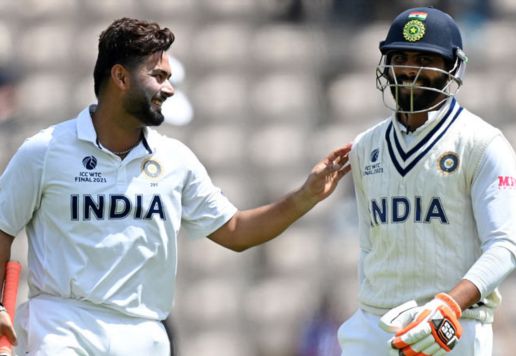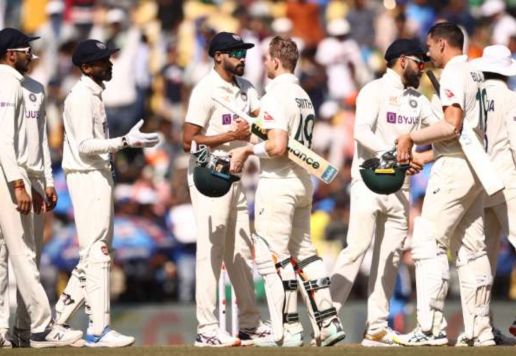Picking the best playing XI of WTC cycle 2021-23: With all four outcomes still conceivable, the World Test Championship (WTC) 2021–23 cycle came down to the last day of the championship match between Australia and India.
On Day 5, however, the formidable Australians proved to be too much for Team India to handle, as they lost by a huge margin of 209 runs, giving Australia its first WTC championship. With 11 wins in 19 Test matches and a dominant performance in the final, Pat Cummins’ team also won first place in the points standings over the course of the two years.
The top nations underwent a number of changes throughout the 2021–23 cycle. This includes Pat Cummins taking over as Australia’s captain, Ben Stokes and Brendan McCullum introducing the “Bazball,” and Rohit Sharma becoming the captain of India.
On the pitch, there were a lot of thrilling moments as well as several significant outcomes. India and England drew their series 2-2, Australia destroyed England 4-0 in the Ashes, and India defeated Australia 2-1 in the Border Gavaskar Trophy. England defeated Pakistan in Pakistan with a score of 3-0.
Ultimately, Australia and India deservedly placed first and second in the points standings and earned a spot in the recently finished WTC Final at The Oval.
Along with the team results, there were numerous outstanding individual efforts from athletes all across the world. The top performers in terms of runs scored and wickets taken were Joe Root (1915 runs) and Nathan Lyon (88). Tom Latham (252 against Bangladesh) and Ajaz Patel (10/119 against India) were named the cycle’s top scorer and bowler, respectively.
Let’s choose the top playing 11 in the WTC cycle (including the final) from 2021–2023, as we recall the many fantastic players who shone for their respective nations.
Usman Khawaja and Dimuth Karunaratne are the openers
Usman Khawaja of Australia and Dimuth Karunaratne of Sri Lanka were selected as the opening batsmen, and their selection was likely the easiest in the WTC XI for the 2021–23 cycle.
With 1,621 runs scored at an astounding average of 64.84, Khawaja was by far the finest opening batter in the cycle. The 36-year-old was second on the list of run scorers and had the highest average among players who had scored more than 1,000 runs.
With 496 runs in three Tests, Khawaja was also named Player of the Series in Australia’s 1-0 series victory in Pakistan. In the most recent Australia series in India, he was a standout as well, leading both teams with 333 runs scored at an average of 47.57 in four Test matches.

The second opener was similarly a foregone conclusion thanks to another strong WTC cycle by Sri Lankan captain Dimuth Karunaratne. The Southpaw amassed 1,054 runs in 12 games at a respectable average of 47.90, including two centuries and eight half-centuries.
Karunaratne’s heroics, which included half-centuries in three of the four innings, kept Sri Lanka in contention for WTC final qualifying up to their final series in New Zealand.
The 35-year-old helped the Lankan Lions finish first in the points standings for the cycle with his outstanding hitting and leadership.
Other contenders are Abdullah Shafique (992 runs at 47.23) and Kraigg Brathwaite (994 runs at 43.21).
Joe Root, Babar Azam, and Travis Head make up the middle order
Joe Root, a former England captain, is unquestionably ranked third after finishing the WTC cycle with 1,915 runs in 22 Test matches at an average of 53.19.
The talented batsman has the most centuries in the cycle with eight, including four in the tie-breaking home series against India. The series was Root’s favorite since he amassed a brilliant 737 runs in five Test matches, with his best score coming at Lords with a 180*.
Although the 32-year-old had to alter his batting strategy to accommodate England’s new offensive style, he remained reliable over the two years, contributing to the team’s comeback.

Babar Azam, the captain of Pakistan, is ranked fourth as a result of his strong batting displays during the WTC cycle. Along with Usman Khawaja, the 28-year-old was one of just two players to amass 1,000 runs and a batting average above 60.
Babar amassed 1,527 runs in 14 games at an average of 61.08, including four centuries and ten fifty-plus scores. Additionally, he scored a century against Pakistan, Sri Lanka, Australia, and England.
The flashy left-handed batsman from Australia, Travis Head, completes the middle order and ends the WTC cycle as the only player with an average strike rate above 50.
Head scored 1,389 runs in 18 games at an impressive strike rate of 81.80 and an average of 55.56, including seven scores of 90 or higher. A number of the southpaw’s hits were in challenging circumstances, including the 92 from 96 balls against South Africa on a perilous Hobart track.
In the WTC final versus India, Head was again named Player of the Match after making an incredible 163 runs to lead Australia to their first WTC victory.
Other contenders are Johny Bairstow (1,285 runs at 51.40), Marnus Labuschagne (1,576 runs at 52.53), and Steve Smith (1,407 runs at 52.11).
Rishabh Pant (wk) and Ravindra Jadeja are the team’s wicketkeeper and all-rounder
The 2021–23 WTC cycle’s wicketkeeper will be none other than India’s daring left-hander Rishabh Pant. The 25-year-old was second only to Travis Head in run production, scoring 868 runs with a blazing strike rate of 80.81 and an average of 43.40.
In the decisive Test matches against South Africa in Cape Town and England in Birmingham, the Southpaw also hit two hundred while batting in the lower middle order for India. Unfortunately, none brought Team India success.

Pant missed the WTC final against Australia and the Border Gavaskar Trophy at home earlier this year due to a car accident in December of the previous year. India struggled to bat despite winning the four-match series, therefore his absence was felt keenly. When they lost the WTC championship game at The Oval, they were completely outplayed.
The all-rounder position in the WTC XI will be filled by Rishabh Pant’s Indian teammate Ravindra Jadeja at position no. 7. The only cricketer in the cycle to score more than 500 runs and take over 40 wickets was a slow-left-arm bowler.
Jadeja ended with 721 runs at an average of 36.04 in 13 matches despite losing a lot of time due to injuries, including two centuries. In addition, he took 47 wickets at a 23.68 average, including three 4- and 5-wicket hauls.
The 34-year-old, who took 22 wickets and scored 135 runs in the four Test matches, was crucial to India’s victory over Australia at home. In this cycle, Jadeja also amassed his greatest Test bowling average (7/42) and score (175*) of his career against Sri Lanka and Australia, respectively.
Ben Stokes (971 runs at 32.36 and 30 wickets at 35.33) and Ravichandran Ashwin (444 runs at 23.36 and 61 wickets at 19.67) are the other contenders.
Ollie Robinson, Nathan Lyon, Kagiso Rabada, and Pat Cummins are the bowlers
Two Australians and one each from South Africa and England makes up the bowling unit.
Pat Cummins, the captain of Australia, who led his team to triumph in the final and first place in the points standings, will also lead the WTC XI.
With the ball, Cummins was equally impressive, taking 57 wickets at a 22.15 average and three 5-wicket hauls. Third among bowlers in the ICC rankings, the 30-year-old concluded this cycle with five wickets, including four against India in the WTC championship match.
Nathan Lyon, an Australian colleague of Cummins’, will be the XI’s specialist spinner because he took the most wickets from 2021 to 2023. Lyon took 88 wickets at an astounding average of 26.12 in 20 games, including five 5-wicket hauls.

The outstanding off-spinner took 22 wickets in Australia’s recent Border Gavaskar Trophy loss in India, and he also claimed four wickets in the second innings in the World T20 final.
Australia’s victory in the WTC final and position at the top of the points standings were both greatly influenced by Cummins and Lyon.
Kagiso Rabada of South Africa and Ollie Robinson, the nation’s newest sensation, will complete the bowling attack.
With 67 wickets at an average of 21.05, the 28-year-old Rabada was the second-highest wicket-taker in the cycle. With a bowling strike rate of 34.80, the dependable pacer led all bowlers in hauls with five 4 and four 5 wicket hauls.
Ollie Robinson, 29, was England’s most dependable bowler of the cycle, with 53 wickets in 13 Tests. The right-arm bowler, who claimed 21 victims, including 7/81 in the third Test at Headingley, was crucial to England’s at-home tie with India.
James Anderson (58 wickets at 20.37), Jasprit Bumrah (45 wickets at 19.73), and Mitchell Starc (55 wickets at 27.98) are further contenders.

